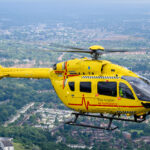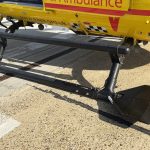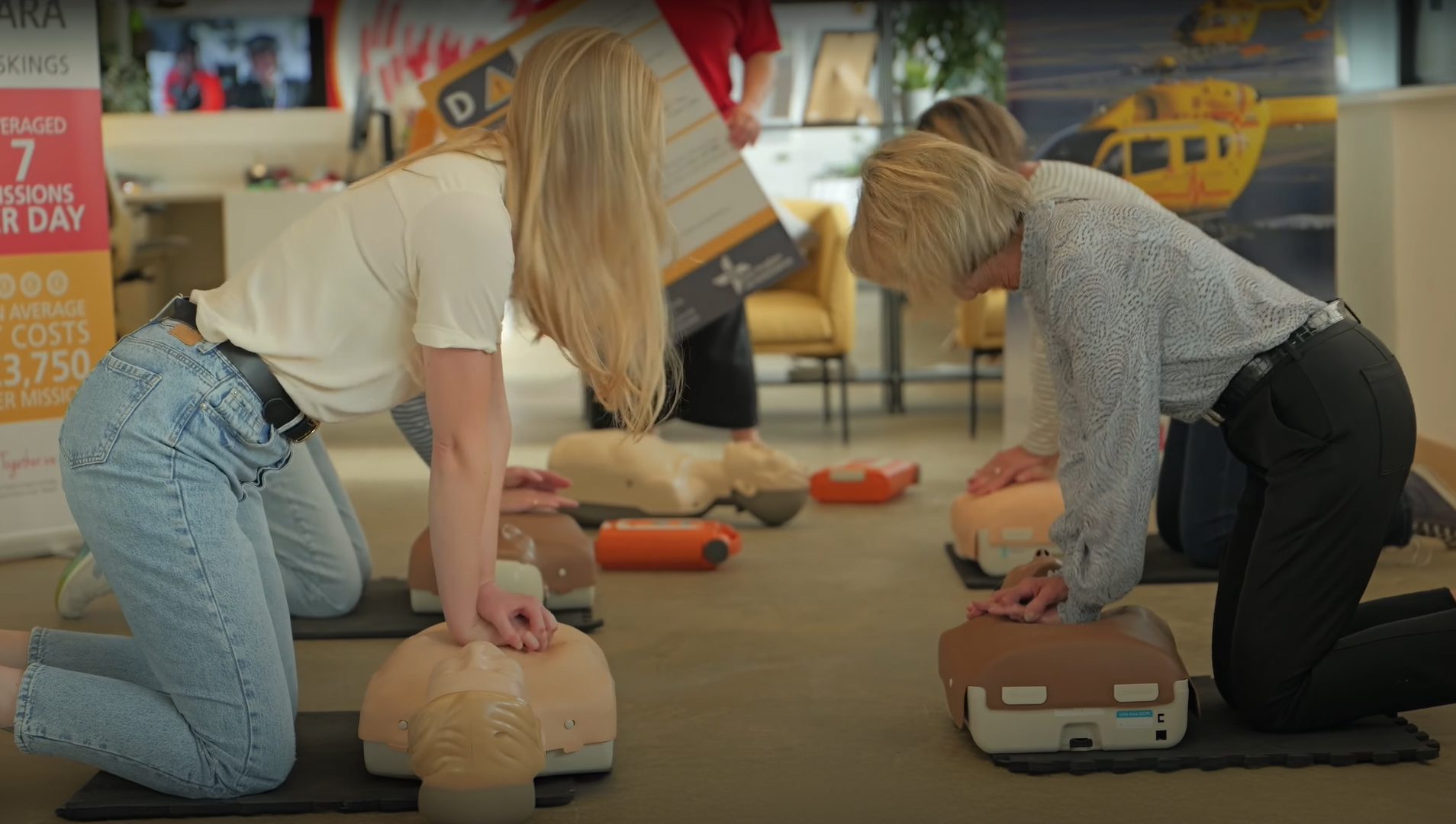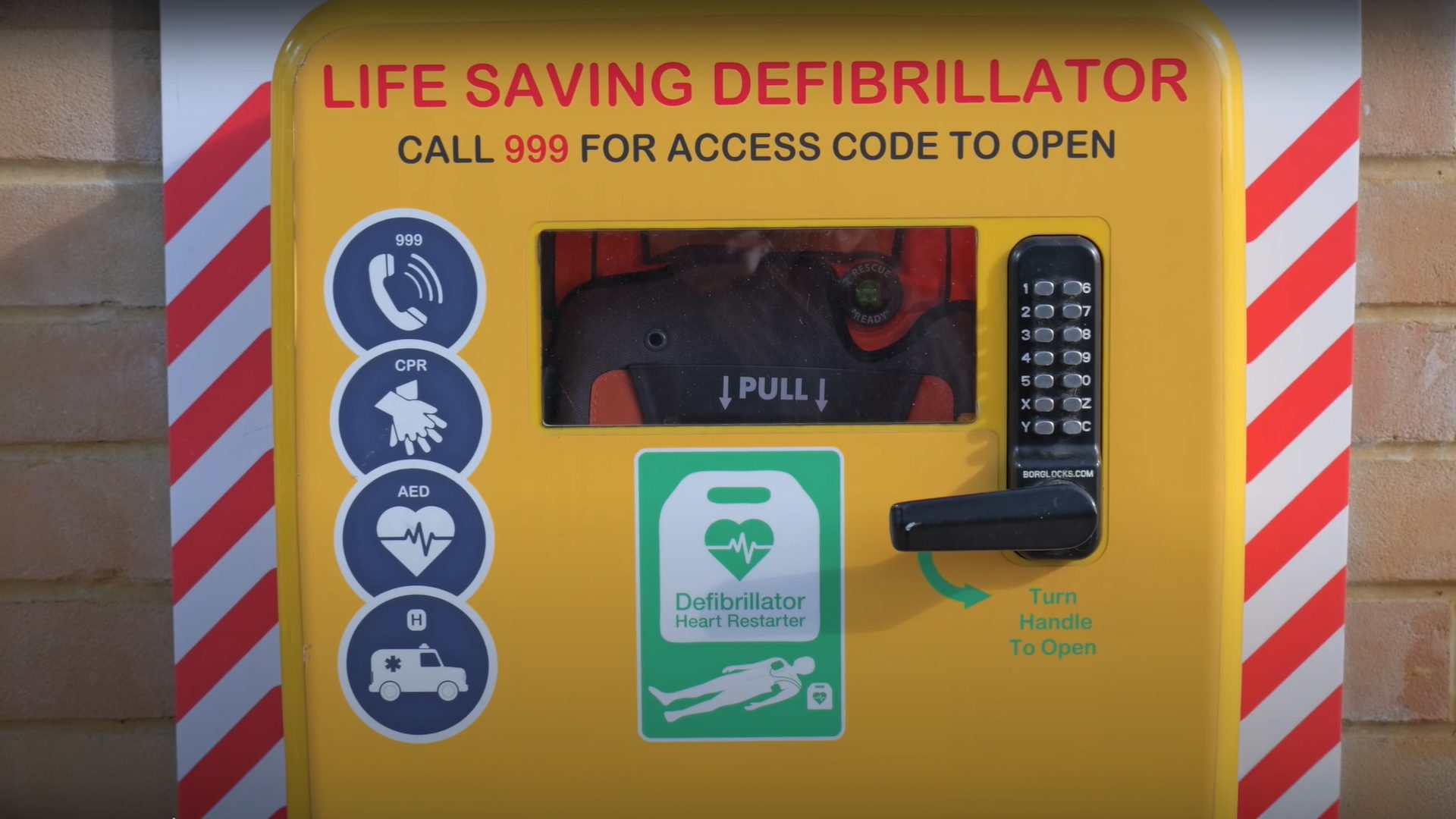10 Oct 2024
Defibrillators Demystified
As part of the free one-hour CPR training sessions delivered by East Anglian Air Ambulance (EAAA) to our local communities, we demonstrate the use of defibrillators. These devices should be used in the event of a cardiac arrest as part of the chain of survival. Every second counts in these life-threatening emergencies and the sooner a defibrillator is used on a patient in cardiac arrest, the better their chances of survival and recovery.
One in four of the emergencies to which EAAA are tasked are to people in cardiac arrest. As part of Restart a Heart Day 2024, we’re answering some of the questions we are commonly asked to help demystify defibrillators to build confidence that, not only are they incredibly simple to use, but they really can save a life.
- Do I need a qualification or be trained to use a defibrillator?
You do not need to be trained or have a qualification to use a defibrillator. Anyone can use them. You see defibrillators in public places because they are there for bystanders to use in the event of a cardiac arrest in the community. You just need to listen carefully to the defibrillator and follow the instructions. The device will talk you through each step.
- Are defibrillators dangerous?
Defibrillators are made to help, not to harm. They will only deliver an electric shock if and when they need to. They do this by analysing the heart’s rhythm and determining whether there is a lack of heart rhythm, or whether it is normal or abnormal. The device will only deliver a shock when it has determined that the heart is in a shockable rhythm.
If a defibrillator identifies that a shock needs to be delivered, it will tell you to stand clear of the patient. The electric shock will stop the hearts abnormal rhythm. Once this has been done, CPR will continue and, in some cases, a normal rhythm may return.
The chances of survival for the patient will increase the sooner a defibrillator is used.
- When do I put the pads of the defibrillator onto the patient?
In the event of an emergency, always shout for help. CPR should be continued, as this is sending blood to the casualty’s brain. Only stop compressions when the defibrillator or emergency services tell you to stop. A second person can stick the pads onto the casualty, while the first performs CPR.
- Can defibrillator pads be re-used?
No. Defibrillator pads are single use. Once the pads have been stuck firmly to the casualty in the correct places, these should remain in place in case the defibrillator needs to deliver more than one shock.
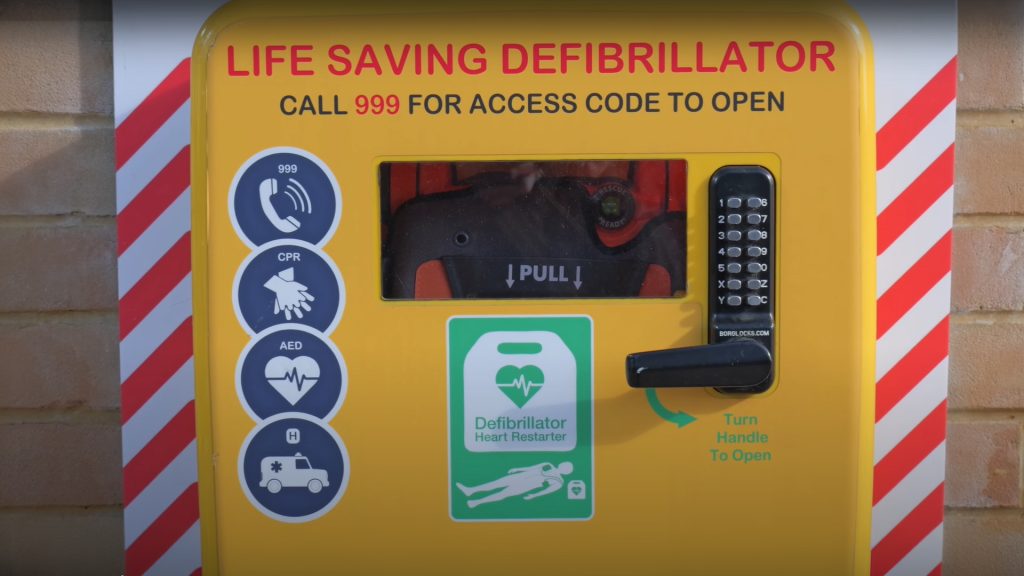
5. What preparation needs to be done on a patient before a defibrillator can be used?
Clothing, including a bra, needs to be removed. This can be done using tough cut scissors found in the chest prep kit. Defibrillator prep kits will contain a razor so you can remove chest hair in the area where the pads will be placed to ensure the pads stick effectively. Remembering the time constraints, you only need to shave the area where the pads will be placed.
6. Can you use a defibrillator if the patient is wet?
As long as the chest area where the pads of a defibrillator are placed is dry, the defibrillator can be used (If a patient has been submerged in water, then they should be removed). In each defibrillator, there will be a chest prep kit, including a towel. Every second counts when a cardiac arrest occurs, so dry this area as quickly as possible while CPR is continuing.
7. Can a defibrillator be used on a child?
Yes. The guidelines from the Resuscitation Council have recently been updated to reflect that defibrillators can be used on a young person in the device’s paediatric mode (this will deliver less of a shock to the patient); this mode will differ slightly from device to device.
8. What about things like pacemakers and piercings?
In most cases, a pacemaker will be on the left side of the chest, so pad placement can be the same as normal. If there is a pacemaker on the right side of the chest, the pad can be placed on the right side of the rib cage. If a cardiac arrest patient has a pacemaker, you can usually notice a bump under the skin of their chest. Do not place the pad over the bump, as the pad needs full contact with the skin to deliver an effective shock.
The same applies with piercings. As long as they will not cause a bump in the defibrillator pad then don’t waste any time trying to remove them. At worst they will cause a burn, which will heal, while a defibrillator could save a life.
9. What are the different types of defibrillators?
There are two types of defibrillators. Fully automatic, which will deliver a shock automatically when the device identifies the heart is in a shockable rhythm.
The other type of defibrillator is semi-automatic, which will require the user to press a button to deliver a shock. The device will give audio instructions on when this should be done.
10. How do I find and access my nearest defibrillator?
The British Heart Foundation, in partnership with Resuscitation Council, ambulance trusts and St John Ambulance, have a national network of registered defibrillators called The Circuit. You can find out locations of registered defibrillators on The Circuit website or Defib finder.
Defibrillators are in locked boxes, usually fixed to the side of buildings. Should you need a defibrillator in the event of a life-threatening medical emergency, the 999-call handler will tell you the location of your nearest defibrillator, including the code to access the device.
If you have a defibrillator, contact The Circuit to get your device registered with them..
